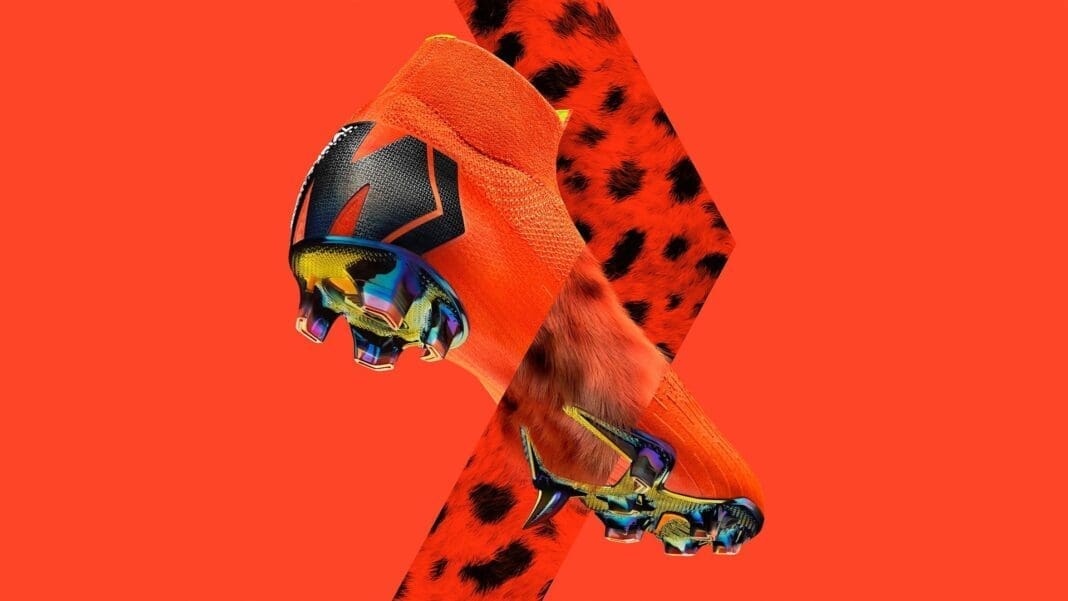The Superfly is not what it used to be.
The Nike “Mercurial” brand is one of its most iconic brands within football. With the launch of the first Nike Air Mercurial in 1998 by Ronaldo, Nike single-handedly created a new category of boots that mirrored their position as an innovator – the speed boot. Mercurial embodies groundbreaking innovation.

It wasn’t long after (in 2002) that the Nike Mercurial Vapor was born. It was the boot which started my love for football boots. Arsenal idol, Thierry Henry, sported them and you couldn’t take your eyes off the Vapors. They looked futuristic (even by today’s standards), were infamously light, thin and were bright in colour when most boots were still all black. It continues to be the poster boy for Nike Football and some of the biggest players in the game have worn them at some point in their career.
The Mercurial line continues to be the face of football boot innovation not just within Nike, but for the industry. However, adidas were catching up with their own F50 line and Nike had to do something big to solidify their position at the top.
Enter: The Nike Mercurial Vapor Superfly
Nike was inspired by concept cars. Concept cars are usually out of this world and are a designer’s wet dream with little regard for feasibility of mass production. They set a vision of what the company’s technology and design could look like in the future.
The Superfly was Nike’s “concept” masterpiece and they based it off the Mercurial Vapor. The first Superfly was launched in 2009 which included internal Flywire cables, weaved within the already thin upper, to secure your feet firmly in place. The boot also featured a light but rigid and responsive carbon fibre plate which helped the entire boot to only weigh just over 180g. It was the super car of the football boot industry.
Fast forward to 2015 and the next big iteration of the Superfly reared its head with a full Flyknit upper and the infamous Dynamic Fit collar, or as the common man would call it – the sock. This version of the Superfly, the Superfly 4, and the Nike Magista, changed the entire way the industry looked at synthetic uppers. Today, sock boots and knitted uppers are the norm thanks to the Superfly.
The Superfly isn’t so special anymore
With the commercial success of the Superfly 4, the Superfly is now a staple of the Nike Football line. The Mercurial Vapor is your low-cut variant while the high cut variant gets to carry the “Superfly” name with an additional price tag of approximately $50.
Every new generation of the Mercurial now features a Vapor and Superfly variation. And this is a problem. It’s not because the Mercurial boots aren’t good. They’re excellent. It’s because, over time, the Vapor and Superfly started being the same boot with the exception of a sock attached and a different price tag.

The Superfly stopped being an icon for future innovation and technology – it is now a symbol of increasing profits. I don’t begrudge profit making but the “Superfly” tag has lost its shine and lustre due to its commercialisation and mass production.
Returning “Superfly” to its rightful status
What I would recommend is removing the name “Superfly” from the Mercurial series. The high cut version of the Vapor should be renamed “Vapor DF”, freeing up Superfly to be attached to only the big and crazy innovations.
To that, I also say that Nike should make fans wait a little longer for each iteration. Use the Superfly platform to be the face of the future. We all love watching Ferrari or Lamborghini launch crazy concept cars even if they’re nowhere near ready for mass production (neither can we afford them, but still…).
Nike, we already love your boot silos but it’s calling out for something different. Something from the future to wow us. Nike, make Superfly great again.







